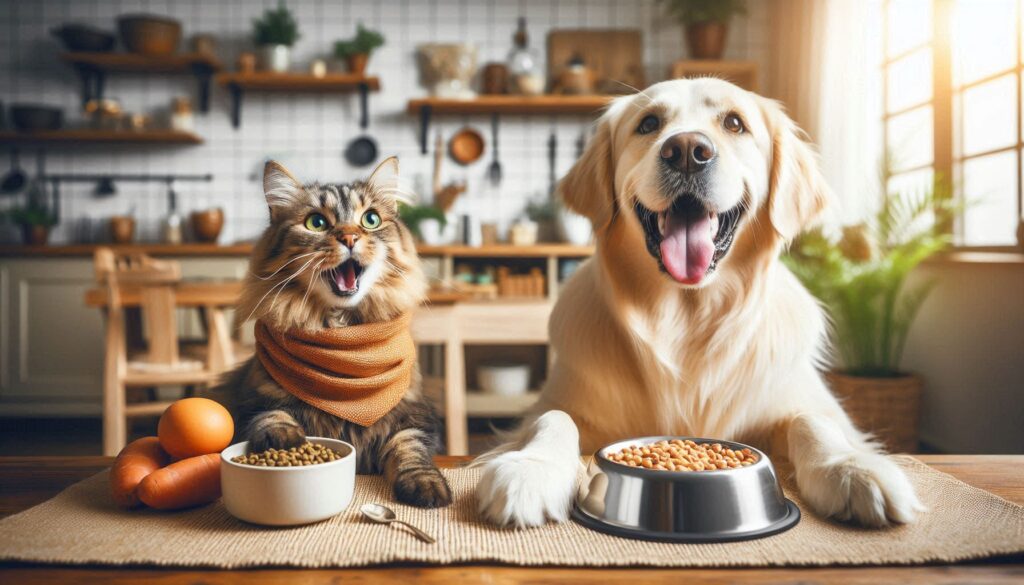
Feeding your pet the right food is one of the most important decisions you can make as a pet owner. With so many options on the market—kibble, raw, wet food, and homemade meals—it can be overwhelming. This guide will help you choose the best diet based on your pet’s breed, age, and health needs.
Types of Food & Their Benefits
Dry Kibble:
- Affordable and easy to store
- Helps with dental health by reducing plaque buildup
- Long shelf life
Wet/Canned Food:
- Higher moisture content for better hydration
- More palatable for picky eaters
- Good for pets with dental issues
Raw Diet (BARF – Biologically Appropriate Raw Food):
- Mimics a natural diet (uncooked meat, bones, and organs)
- High protein, no fillers or preservatives
- Can lead to shinier coats and improved digestion
Homemade Diets:
- Fully customizable based on pet’s needs
- Avoids preservatives and artificial ingredients
- Requires proper balance of proteins, fats, and carbs
Best Diet for Different Breeds & Life Stages
Puppies & Kittens:
- Need high-protein, high-fat diets for rapid growth
- DHA (found in fish oils) supports brain development
- Avoid grain-heavy foods that lack essential nutrients
Adult Pets:
- Balanced protein and fats to maintain energy levels
- Consider breed size: large breeds need joint support, while small breeds may need smaller kibble sizes
Senior Pets:
- Lower-calorie diets to prevent obesity
- Added glucosamine & chondroitin for joint health
- Higher fiber to aid digestion
Common Food Allergies & How to Avoid Them
Common Allergens:
- Grains (wheat, corn, soy)
- Dairy products
- Chicken & beef (some pets develop intolerances)
Hypoallergenic Diet Options:
- Limited-ingredient diets with single protein sources
- Novel proteins like duck, venison, or rabbit
- Grain-free or hydrolyzed protein diets
How to Transition to a New Diet Safely
Day 1-2: 75% old food, 25% new food
Day 3-4: 50% old food, 50% new food
Day 5-6: 25% old food, 75% new food
Day 7: 100% new food
Pro Tip: Always monitor for signs of digestive upset, such as diarrhea or vomiting. If issues arise, transition more slowly.
Recommended Brands & Where to Buy
At Purr And Woof Supply (P.A.W.S.), we stock high-quality pet food free from harmful fillers and artificial ingredients. Some of our top-rated brands include:
For Dogs: [Brand A], [Brand B], [Brand C]
For Cats: [Brand X], [Brand Y], [Brand Z]
Shop now at www.purrandwoofsupply.com and give your pet the best nutrition possible!
Feeding your pet a nutritious, balanced diet is key to their long-term health and happiness. By understanding different food types, common allergens, and the best diets for each life stage, you can make informed choices for your furry friend.
What’s your pet’s favorite food? Let us know in the comments below!